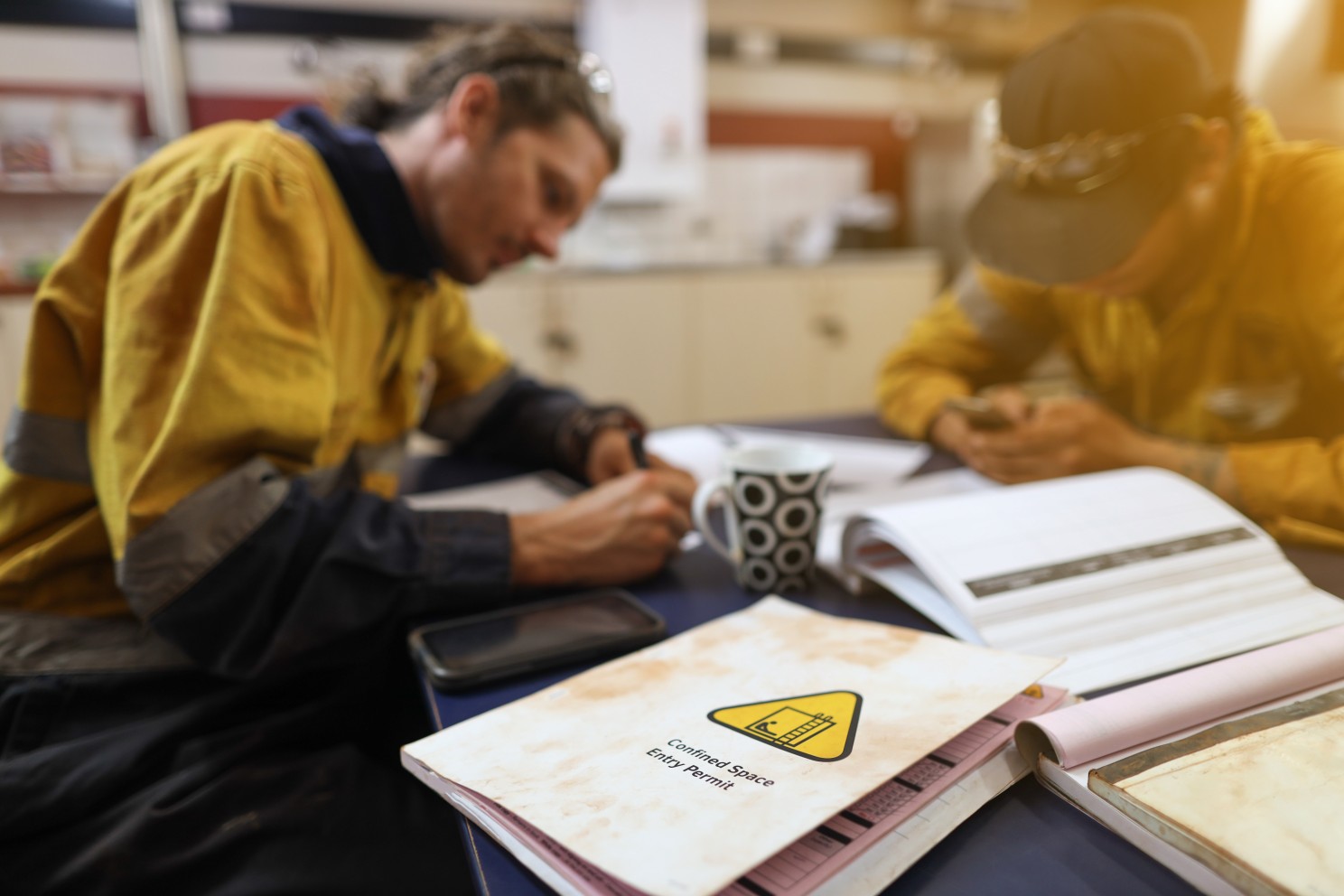The Language of Safety: Beyond Words – Training That Transforms Safety Knowledge Into Action.
Two weeks after mandatory lockout / tagout training, a maintenance technician bypassed safety procedures and suffered a severe crush injury.
During the incident investigation, he said something that changed my perspective on safety training forever:
“I sat through the class. I signed the attendance sheet. But nobody ever asked if I truly understood it all.”
His words highlight a fundamental problem with safety training. Attendance doesn’t equal comprehension. Participation doesn’t equal competence.
The Fiction of “Trained” Workers
The most dangerous word in workplace safety might be trained.
“He was trained on that equipment.” “Everyone’s been trained on the procedure.” “We did training last quarter.”
These statements create a dangerous illusion, that information transfer automatically equals understanding and behavioural acceptance.
I was involved in developing new maintenance procedures for an electrical team working on remote equipment. I noted they had locked out and tagged onto the main circuit breaker. Tested for dead to prove deenergisation. Then set about their work. When I was later back in the office, I was putting the procedure together and took the time to review the site Isolation and Lock-out procedure and learnt that as there were two operators involved, they also required an isolation verification lock in addition to their personal danger locks. When I asked the electrical workers about this, they were surprised to hear about it. The isolation procedure had been in place for more than two years, but the operators had never undergone any training on it. Instead they were referred to it.
They weren’t trained. They were merely exposed to information and this lead to a gap in knowledge.
The Three Dimensions of Effective Training
Traditional approaches to workplace training focus almost exclusively on content delivery, what information to present. But truly effective training operates in three dimensions:
- Comprehensive Content – Well-structured information covering all essential knowledge and skills.
- Verified Competency – Formal assessment that confirms actual understanding and capability.
- Diverse Learning Pathways – Multiple approaches that reach different learning preferences.
Most training programs excel at the first dimension but fail at the second two, creating the dangerous gap between knowing and doing.
Beyond the Attendance Sheet: Verifying Competency
The “get out of jail free card” exists in most organisations:
“I wasn’t properly trained.”
Without competency verification, this defence is nearly impossible to counter. And more importantly, without verification, you can’t be confident your people actually possess the skills to protect themselves.
Effective verification includes:
Practical Demonstrations
Operators are required to physically demonstrate lockout / tagout procedures on actual equipment before certification.
Scenario-based Assessments
Workers are presented with photos of real worksite conditions and asked to identify hazards and determine effective controls.
Knowledge Testing
Quizzes and assessment tools with a required passing threshold are undertaken to verify procedural understanding.
Follow-up Observations
Undertake random spot-checks and safety walk arounds after training to verify retention and application.
The key question isn’t “Did they attend?” but “Can they perform?”
Leveraging Available Frameworks
You don’t need to reinvent the wheel. Australia’s training.gov.au provides industry-specific competency frameworks that outline:
- Essential knowledge requirements
- Performance criteria for specific tasks
- Assessment guidelines
- Verification methods
These frameworks offer invaluable blueprints for building training that produces genuine competency, not just compliance.
The Multi-channel Learning Imperative
If you’ve ever watched someone’s eyes glaze over during PowerPoint slide number 37, you understand that one-dimensional training reaches a fraction of your workforce.
People process and retain information differently:
Visual Learners (65%)
Absorb information best through images, diagrams and demonstrations.
A mining company I worked with replaced text-heavy procedures with illustrated workflows, reducing procedural violations by 43%.
Auditory Learners (30%)
Learn through listening and discussion.
Toolbox talks are a good example of this, where experienced workers share stories of incidents and near-misses, dramatically improving hazard reporting.
Kinaesthetic Learners (5%)
Learn by doing, touching and experiencing.
Many larger mining companies use equipment simulation stations where workers can physically practice general operation and emergency response, thereby increasing efficiencies, reducing incidents and improving response times.

Creating Multi-modal Training
Effective training isn’t about catering to preferred learning styles exclusively, it’s about creating multiple pathways to comprehension:
- Blend Theory and Practice – Break classroom sessions with hands-on application.
- Use Visual Support – Incorporate photos, videos and demonstrations.
- Create Discussion Opportunities – Facilitate sharing of experiences and questions.
- Include Physical Practice – Build in opportunities to perform tasks under supervision.
- Address Literacy Barriers – Use visual guides and plain language to support diverse work forces.
A manufacturing company I advised redesigned their permit-to-work training to include classroom theory, group discussions, video demonstrations and supervised practice sessions. Compliance jumped from 68% to 94% within three months.
Beyond Training to Learning Culture
The most effective organisations move beyond episodic training events to create continuous learning environments:
- Regular Refreshers – Brief reinforcement sessions that highlight key points.
- Peer Coaching – Experienced workers mentor and guide others.
- Visible Competency Tracking – Systems that clearly show who is authorised and verified for specific tasks.
- Learning From Incidents – Using near-misses and incidents as learning opportunities.
- Progressive Skill Building – Pathways for advancing competency over time.
An electrical contractor implemented a skills matrix that visually displayed each worker’s verified competencies. This transparency created both accountability and motivation to expand capabilities.
The Protection Payoff
Training done right isn’t just about compliance, it’s about creating a workforce that genuinely knows how to protect themselves and others.
When information transforms into understanding, understanding into skill and skill into consistent behaviour, the result isn’t just better paperwork. It’s fewer incidents, reduced severity and ultimately, people who return home safely.

How we write that’s different
Write Safe AU approaches training differently. We don’t just create training materials, we design comprehensive learning systems.
Our approach integrates content development, competency verification and multi-modal delivery so information transforms into actual capability. We help you move beyond the attendance sheet to create genuine workplace competency.
This learning-centred methodology means your training doesn’t just satisfy auditors, it genuinely protects your people by creating the skills they need to identify hazards, implement controls and work safely. Because true protection comes not from what people hear, but from what they understand and can apply.
Training isn’t what you deliver. It’s what people can do afterward.
This is The Language of Safety. Clear documentation. Safer workforce.
Write Safe AU
